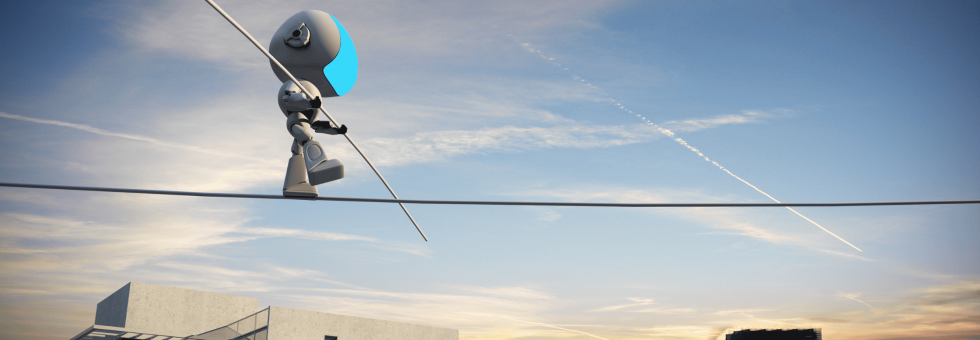Introduction to Overfitting and Underfitting in AI
In machine learning, achieving the right balance between overfitting and underfitting is crucial to building an accurate and generalizable model. Both overfitting and underfitting are common challenges faced during the training process and can significantly affect the model’s performance on new, unseen data.
In this article, we’ll explore what overfitting and underfitting are, how to identify them, and techniques to prevent them. We’ll also provide practical examples and code snippets to help you apply these concepts in real-world machine learning tasks.
What are Overfitting and Underfitting?
Overfitting
Overfitting occurs when a model learns the details and noise in the training data to the extent that it negatively impacts the model’s performance on new, unseen data. In other words, the model becomes too complex and too closely fitted to the training data, losing its ability to generalize.
Signs of Overfitting:
- High accuracy on training data, but low accuracy on test data.
- Complex models (e.g., deep decision trees, high-degree polynomials) that fit the data perfectly, but perform poorly on new examples.
Underfitting
Underfitting happens when a model is too simple to capture the underlying patterns in the data, resulting in poor performance on both the training set and the test set. In this case, the model doesn’t have enough complexity to learn from the data.
Signs of Underfitting:
- Low accuracy on both training and test data.
- Models that are too simple, such as linear regression for complex, nonlinear data.
Techniques to Prevent Overfitting
Preventing overfitting is crucial to ensure that your model generalizes well to unseen data. Here are some common techniques to avoid overfitting:
1. Regularization
Regularization adds a penalty to the loss function to constrain the complexity of the model. Two popular types of regularization are:
- L1 regularization (Lasso): Adds the absolute value of the coefficients as a penalty.
- L2 regularization (Ridge): Adds the square of the coefficients as a penalty.
These penalties discourage the model from fitting the noise and help reduce overfitting by making the model simpler.
2. Cross-validation
Cross-validation involves splitting the data into multiple subsets (folds) and training the model on different combinations of these subsets. This helps evaluate the model’s performance on unseen data, providing better insights into its ability to generalize.
3. Dropout
Dropout is a regularization technique commonly used in neural networks. During training, it randomly “drops” or disables a certain percentage of neurons in the network, preventing the model from becoming too reliant on any one feature and reducing overfitting.
Techniques to Prevent Underfitting
To prevent underfitting, the model needs to be more complex or capable of learning from the data. Here are some techniques to reduce underfitting:
1. Adding More Features
If the model doesn’t have enough information to learn, consider adding more features or input variables. This provides the model with more opportunities to uncover patterns in the data.
2. Increasing Model Complexity
Using a more complex model, such as a higher-degree polynomial regression or a deeper neural network, can help the model capture more intricate patterns in the data. However, this comes with the risk of overfitting, so balancing complexity with regularization is key.
Example: Diagnosing Overfitting in a Decision Tree Model
A decision tree is a common machine learning model, but it is prone to overfitting, especially when it is allowed to grow too deep. Let’s demonstrate how overfitting might occur with a decision tree and how we can diagnose it.
Code Snippet: Diagnosing Overfitting in a Decision Tree Model
from sklearn.datasets import load_iris
from sklearn.model_selection import train_test_split
from sklearn.tree import DecisionTreeClassifier
from sklearn.metrics import accuracy_score
# Load the Iris dataset
data = load_iris()
X = data.data
y = data.target
# Split the data into training and testing sets
X_train, X_test, y_train, y_test = train_test_split(X, y, test_size=0.3, random_state=42)
# Create a decision tree model
model = DecisionTreeClassifier(random_state=42)
# Fit the model on the training data
model.fit(X_train, y_train)
# Predict on the training and test data
y_train_pred = model.predict(X_train)
y_test_pred = model.predict(X_test)
# Evaluate the performance
train_accuracy = accuracy_score(y_train, y_train_pred)
test_accuracy = accuracy_score(y_test, y_test_pred)
print(f"Training Accuracy: {train_accuracy:.4f}")
print(f"Test Accuracy: {test_accuracy:.4f}")
Explanation:
- We load the Iris dataset, which is a classic dataset used for classification tasks.
- We split the data into training and testing sets.
- A decision tree classifier is trained on the training data.
- We evaluate the model on both the training data and test data.
Diagnosing Overfitting:
- If the training accuracy is significantly higher than the test accuracy, the model is likely overfitting.
- To prevent this, we can apply techniques like pruning (cutting off branches of the tree that do not improve performance) or limiting the maximum depth of the tree.
Conclusion
Balancing overfitting and underfitting is crucial for building robust and accurate machine learning models. Overfitting can be prevented by techniques like regularization, cross-validation, and dropout, while underfitting can be avoided by increasing the model’s complexity or adding more features.
Understanding how to detect and mitigate both issues is an essential skill for data scientists and machine learning practitioners. By following the techniques outlined in this article, you can build models that generalize well to new data and provide reliable predictions.
FAQs
- How do I know if my model is overfitting or underfitting?
- Overfitting is indicated when the model performs well on training data but poorly on test data. Underfitting is indicated when the model performs poorly on both the training and test data.
- What is the best way to prevent overfitting in a decision tree model?
- You can prevent overfitting in decision trees by setting a maximum depth, using pruning, or applying cross-validation.
- What is cross-validation, and why is it useful?
- Cross-validation involves splitting the dataset into multiple subsets and training the model on different combinations of these subsets. It provides a better estimate of model performance and helps prevent overfitting.
Are you eager to dive into the world of Artificial Intelligence? Start your journey by experimenting with popular AI tools available on www.labasservice.com labs. Whether you’re a beginner looking to learn or an organization seeking to harness the power of AI, our platform provides the resources you need to explore and innovate. If you’re interested in tailored AI solutions for your business, our team is here to help. Reach out to us at [email protected], and let’s collaborate to transform your ideas into impactful AI-driven solutions.





